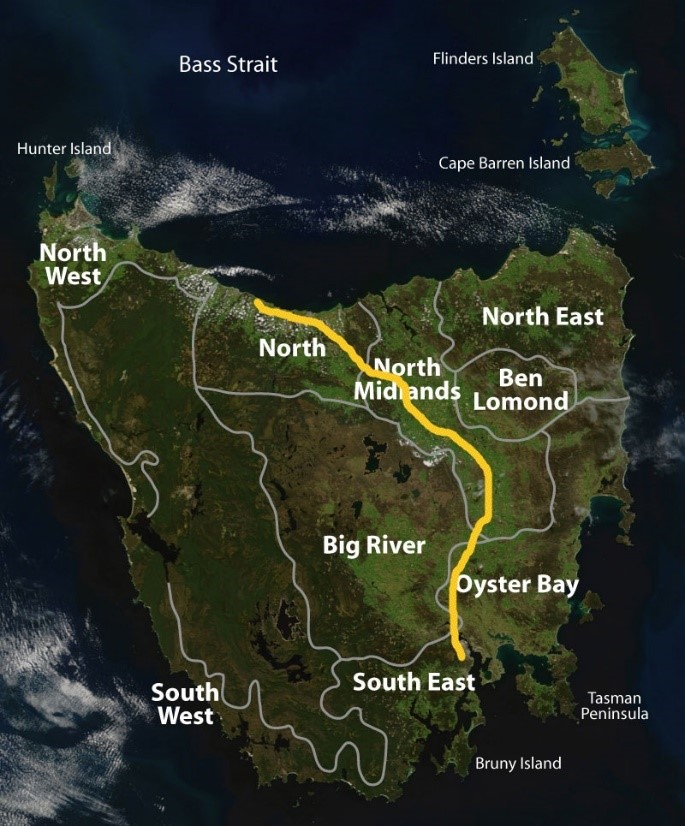milaythina | Country
Acknowledgement of Country nipaluna/Hobart
As a reflection of this institution's recognition of the deep history and culture of this island, the University of Tasmania wishes to acknowledge the muwinina (mou wee nee nar) and palawa (pronounced pal-a-wa) peoples, the traditional owners and custodians of the land upon which this campus was built; and pay respect to elders past, present and emerging.
Acknowledgement of Country Burnie
As a reflection of this institution's recognition of the deep history and culture of this island, the University of Tasmania wishes to acknowledge the traditional owners, the palawa (pronounced pal-a-wa) people and custodians of the land upon which this campus was built; and pay respect to elders past, present and emerging.
The Nations (North & South East) & the Peoples
- Emu Bay People, members of the Northern Nation
- Sandy Bay People, members of the South East Nation
- Both have links with Big River Nation

The yellow line shows the walking trail from Emu Bay to Hobart
Aboriginal Land and Trade
"Before colonial contact, Aboriginal tribes lived within a consistent local or regional area. These areas are known as a tribe’s Country and cultural landscape. People also travelled into other areas. They often combined trade, seasonal, ceremonial and foraging purposes into one inter-tribal meeting. Sometimes several tribes gathered over several days or weeks."
"These gatherings strengthened relationships and ceremonial practices. They enabled trade in items such as tools, ochre and shell necklaces. Aboriginal people also negotiated food gathering across land managed by a neighbouring tribe. These areas included grasslands to hunt kangaroo and eastern wetlands or coastal areas to gather swan eggs."
"These routes were well trodden, particularly during summer, autumn and spring. Some routes were a series of grasslands kept open by regular controlled fires while others were more like formed tracks. Sometimes members of a host tribe would accompany seasonal visitors through their Country. Most clans, particularly those inland, could travel several hundred kilometres each year. One example is those tribes from the central highlands who travelled to the coast and back again." http://www.aboriginalheritage.tas.gov.au/cultural-heritage/aboriginal-languages-and-trade
"These gatherings strengthened relationships and ceremonial practices. They enabled trade in items such as tools, ochre and shell necklaces. Aboriginal people also negotiated food gathering across land managed by a neighbouring tribe. These areas included grasslands to hunt kangaroo and eastern wetlands or coastal areas to gather swan eggs."
"These routes were well trodden, particularly during summer, autumn and spring. Some routes were a series of grasslands kept open by regular controlled fires while others were more like formed tracks. Sometimes members of a host tribe would accompany seasonal visitors through their Country. Most clans, particularly those inland, could travel several hundred kilometres each year. One example is those tribes from the central highlands who travelled to the coast and back again." http://www.aboriginalheritage.tas.gov.au/cultural-heritage/aboriginal-languages-and-trade



